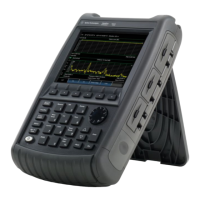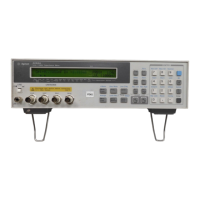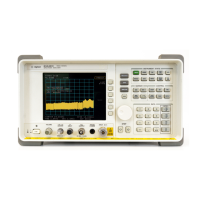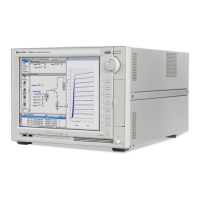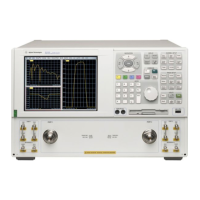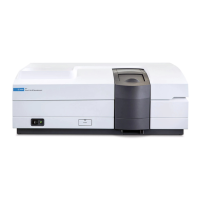28 FieldFox User’s Guide
The return loss trace is displayed on the FieldFox screen.
1-Port Cable Loss Measurements
While all cables have inherent loss, weather and time will deteriorate cables and
cause even more energy to be absorbed by the cable. This makes less power
available to be transmitted.
A deteriorated cable is not usually apparent in a Distance to Fault measurement,
where more obvious and dramatic problems are identified. A Cable Loss
measurement is necessary to measure the accumulated losses throughout the
length of the cable.
A 2-port Insertion Loss measurement is usually more accurate than a 1-port
Cable Loss measurement. However, to perform a 2-port Insertion Loss
measurement, both ends of the cable must be connected to the FieldFox.
NOTE In high-loss conditions, a Cable Loss measurement becomes ‘noisy’ as the test
signal becomes indistinguishable in the FieldFox noise floor. This can occur
when measuring a very long cable and using relatively high measurement
frequencies. To help with this condition, use High Power (page 26) and
Averaging. (page 24).
How to make a 1-port Cable Loss Measurement
1. Press Preset then Preset.
2. Then More then Cable Loss (1-Port) .
3. Connect the cable to be tested.
4. Press Freq/Dist and enter Start and Stop frequency values of the
measurement.
5. Press Sweep 3 then Min Swp Time. Increase the Sweep Time until a stable
trace is visible on the screen. The amount of time that is required increases
with longer cable lengths. Learn more in the Supplemental Online Help:
http://na.tm.agilent.com/fieldfox/help/FieldFox.htm
6. Remove the cable to be tested.
7. Press Cal 5, then QuickCal or Mechanical Cal.
8. Follow the prompts to perform calibration at the end of the jumper cable or
adapter. Learn more about Calibration on page 64.
9. Connect the cable to be tested.
NOTE Low-level standing waves (also known as ‘ripple’) which may be visible in
reflection measurements, can hide the actual loss of the cable. Steps 10 through
13 can minimize the ripple. Perform the measurement with and without steps 10
through 13 and choose the method with the least amount of ripple.
10. Connect a LOAD at the end of the cable to be tested. This limits the
reflections to faults that are located in the cable under test.
11. Press Trace 6 then Data->Mem to store the trace into Memory.
12. Remove the LOAD and leave the end of the cable to be tested open.
13. Press Data Math then Data – Mem. The ripple in the measurement is
removed. These minor imperfections in the cable should not be considered in
the Cable Loss measurement.
14. Use Averaging to remove random noise from high-loss measurements. Press
BW 2 then Average.

